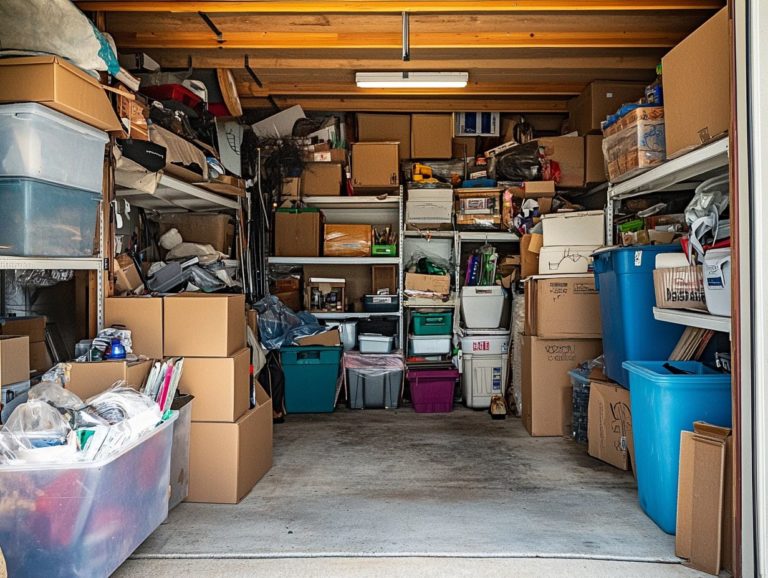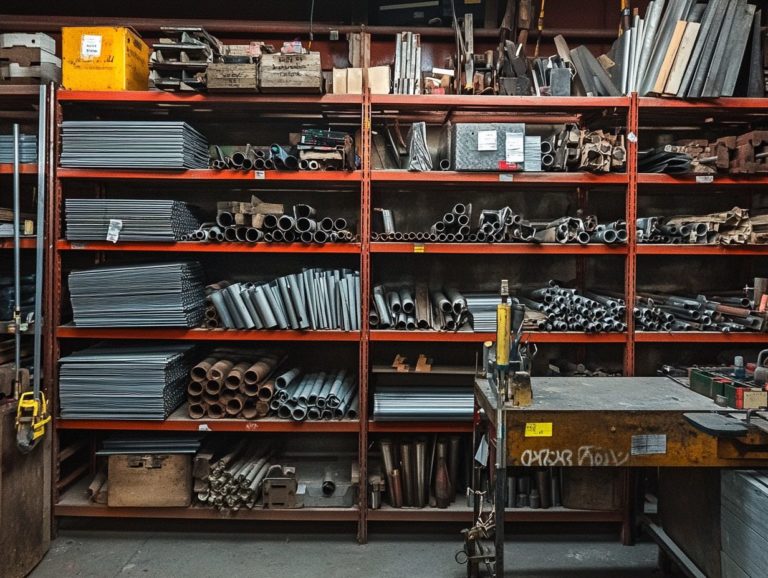How to Avoid Fire Hazards in Metal Storage
Fire hazards in metal storage facilities pose very serious risks that can lead to major outcomes. Grasping the common causes of these fires and evaluating potential risks is essential for upholding safety.
This article delves into vital aspects, including best practices for fire prevention, proper storage techniques, emergency response protocols, and adherence to safety regulations. By equipping yourself with this knowledge, you can significantly contribute to creating a safer environment within metal storage facilities!
Contents
- Key Takeaways:
- Understanding Fire Hazards in Metal Storage
- Assessing Fire Risk in Metal Storage Facilities
- Preventing Fires in Metal Storage
- Responding to a Fire in a Metal Storage Facility
- Ensuring Compliance and Safety in Metal Storage
- Frequently Asked Questions
- How can I prevent fire hazards in metal storage?
- Can the type of metal used in storage affect fire hazards?
- How can I properly store flammable liquids in metal containers?
- What should I do in case of a fire in a metal storage area?
- Can proper ventilation help prevent fire hazards in metal storage?
- Are there any specific fire safety regulations for metal storage?
Key Takeaways:
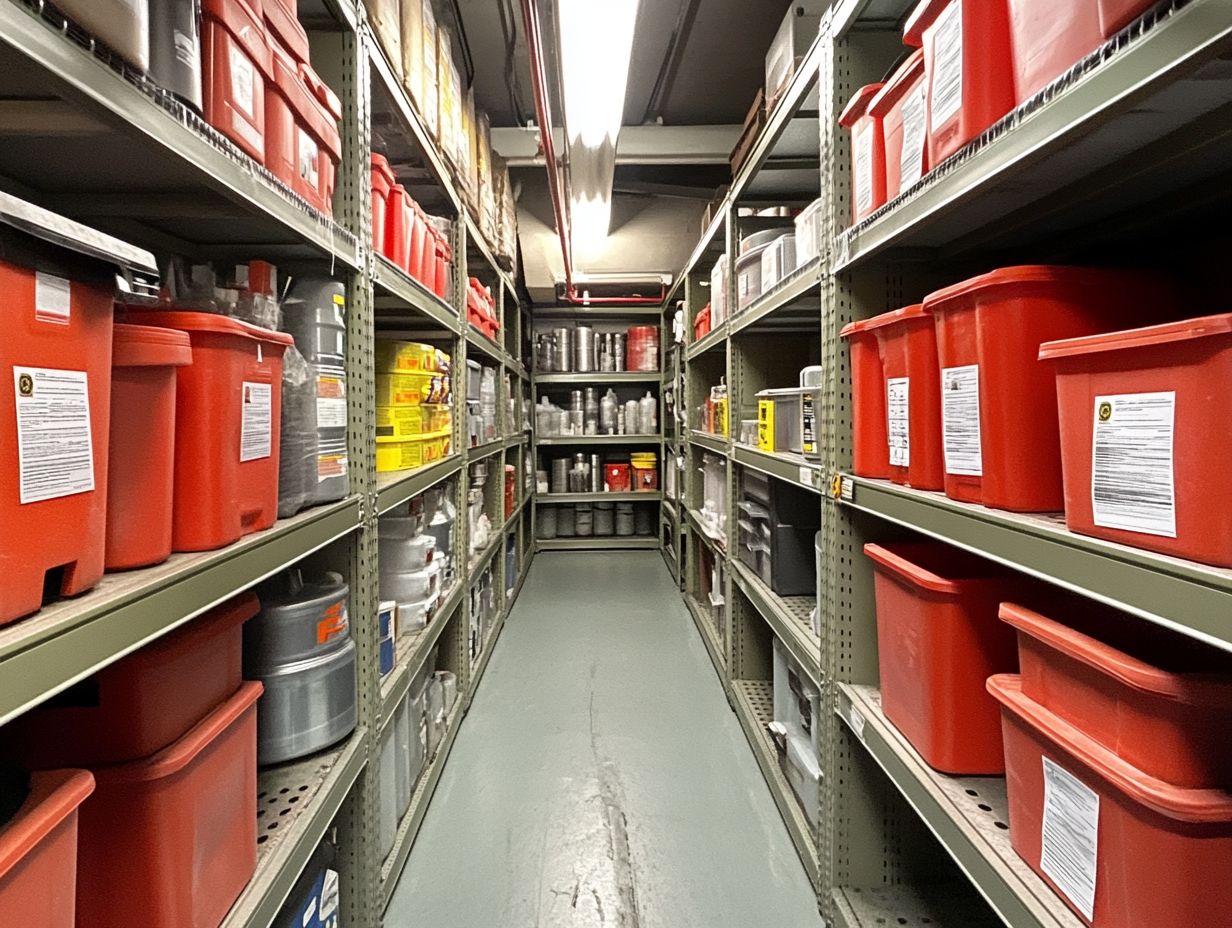
- Act now by regularly inspecting your metal storage to prevent fire hazards!
- Use proper storage and handling techniques to significantly reduce the risk of fires in metal storage.
- Have emergency procedures and protocols in place to respond effectively to fires in a metal storage facility.
Understanding Fire Hazards in Metal Storage
Understanding fire hazards in metal storage requires recognizing the unique risks associated with combustible metals, which are metals that can catch fire easily, like magnesium, titanium, and aluminum. These materials can ignite and contribute to Class D fires, which involve fires with combustible metals and are particularly challenging to manage.
Implementing proper fire safety measures is essential to prevent incidents that could lead to very serious explosions and significant facility damage. According to the National Fire Protection Association (NFPA), effective fire prevention strategies are crucial for mitigating these dangers and ensuring a safe environment. Additionally, understanding how to prepare for a precious metals market crash can also help in safeguarding investments during uncertain times.
Common Causes of Fires in Metal Storage
Common causes of fires in metal storage facilities often arise from the presence of combustible metals, metal dust, and flammable liquids, creating hazardous conditions that can lead to Class D fires.
You should be aware that metal dust accumulation can ignite spontaneously, especially when mixed with static electricity or exposed to open flames. To minimize this risk, it’s crucial to know how to protect your metals from moisture, as improper storage of flammable liquids significantly increases the risk, allowing these substances to catch fire rapidly if not contained properly.
Equipment failures, such as overheating machines or malfunctioning electrical systems, are critical factors that can spark a blaze. Understanding these potential risks is vital for maintaining safety and preventing devastating consequences in metal manufacturing settings. Additionally, for those interested in the industry, learning how to trade precious metals can also be beneficial.
Assessing Fire Risk in Metal Storage Facilities
Assessing fire risk in metal storage facilities requires a comprehensive risk assessment that identifies potential hazards and evaluates existing fire safety measures. Periodic evaluations ensure that all safety protocols remain current and effective in mitigating fire risks.
By prioritizing these assessments, you can greatly enhance the overall safety and security of your facility.
Factors to Consider and Mitigation Strategies
When assessing fire risk, consider several factors, such as the types of combustible metals stored, the existing dust collection systems, and the effectiveness of your active firefighting measures. These elements are crucial in developing tailored mitigation strategies suited to your specific needs.
The presence of hazardous materials and the design of your storage area significantly impact fire safety. Implement comprehensive dust management practices, as even minor accumulations can lead to combustion. Additionally, if you’re looking for effective solutions, consider how to store metals in small spaces to optimize your storage options.
Integrating advanced fire suppression systems will provide a proactive defense against potential flames. Additionally, training your staff on effective firefighting techniques ensures they can respond swiftly in the event of a fire, minimizing any potential damage.
Regular audits and maintenance of safety equipment are vital to identifying and rectifying vulnerabilities before they escalate into serious risks.
Preventing Fires in Metal Storage
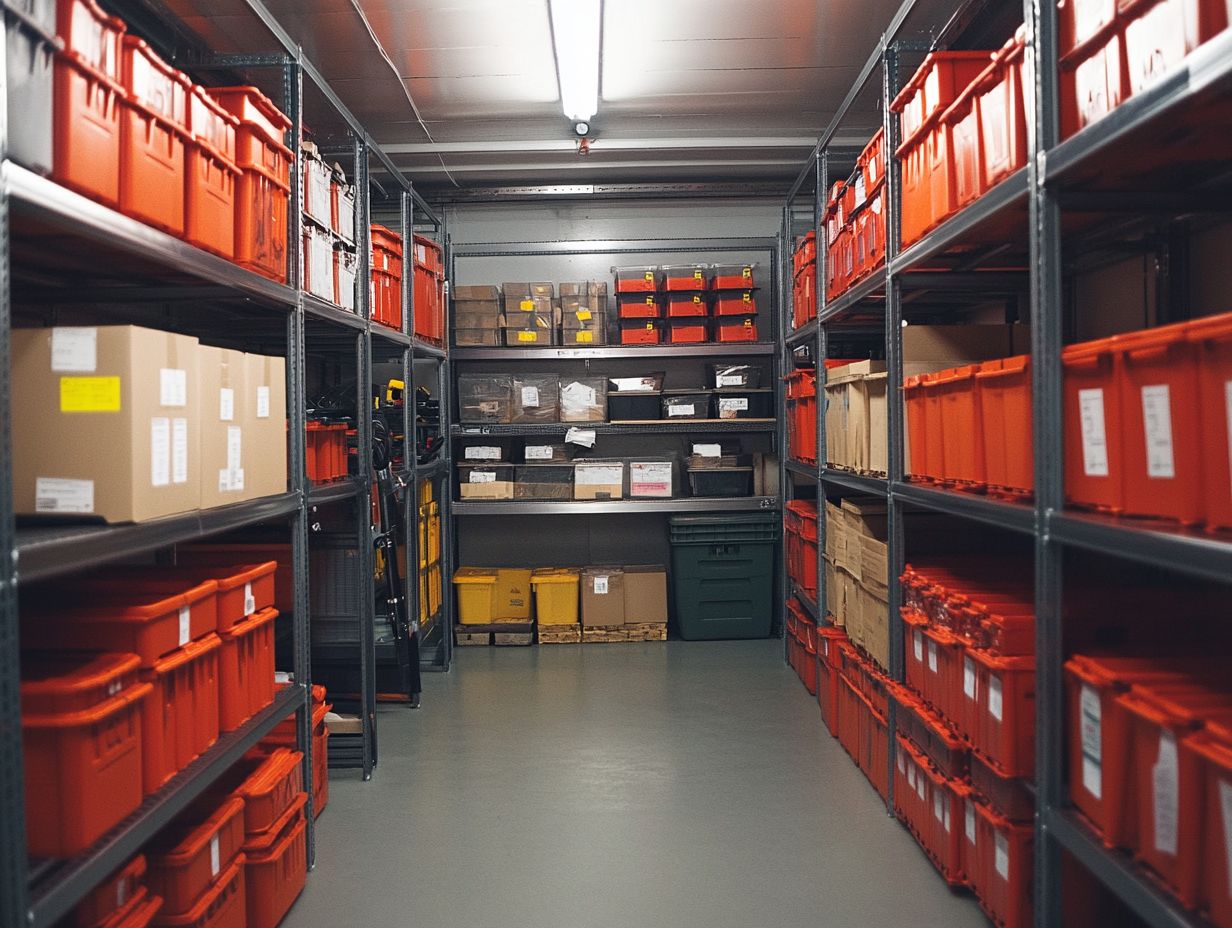
Preventing fires in metal storage requires implementing best practices and robust fire prevention measures. This includes maintaining appropriate housekeeping practices and conducting regular dust sample analysis to identify hazardous accumulations of metal dust.
Taking these proactive steps ensures a safe and secure working environment.
Best Practices for Fire Prevention
Implementing best practices for fire prevention in metal storage facilities involves key strategies that should not be overlooked:
- Routine safety training for employees
- The installation of effective dust collection systems
- Ensuring access to the appropriate fire extinguishers
Providing comprehensive training programs equips your workforce with the vital knowledge needed to respond effectively during emergencies. Educating employees about different types of fire extinguishers like ABC extinguishers for general use and specialized options for flammable materials enables them to deploy the right tools swiftly when needed.
Regular inspections of dust collection systems are essential. These systems can accumulate hazardous materials that significantly increase fire risk. Establishing a consistent inspection schedule allows you to address any buildup promptly, enhancing overall safety and giving peace of mind in your facility. Additionally, it’s important to be aware of potential pitfalls, much like understanding how to avoid scams in precious metals investment, to protect your investments.
Proper Storage and Handling Techniques
Proper storage and handling techniques are vital when managing materials that can catch fire easily in metal storage facilities. This not only reduces the risk of fire hazards linked to improper practices but also ensures compliance with safety regulations.
Installing smoke detectors and adhering to fire safety guidelines are non-negotiable steps in this process. Additionally, understanding how to prevent oxidation in metal storage can be crucial when utilizing effective containment methods like specialized bins designed specifically for combustible materials, helping to prevent accidental fires by minimizing exposure to ignition sources.
Regular training for your team on these protocols is vital. Ensuring everyone understands the potential risks and knows how to respond appropriately in various situations is key. Maintaining a clean and clutter-free storage area promotes safety and aids in meeting fire safety standards, especially when considering how to store metals during relocation.
Conducting regular inspections of both storage facilities and smoke detection systems will significantly bolster your safety measures, offering peace of mind for both employees and management. Additionally, understanding the best practices for precious metals investment can further enhance your overall risk management strategy.
Responding to a Fire in a Metal Storage Facility
When faced with a fire in a metal storage facility, crafting an effective response plan is crucial. This plan should outline comprehensive emergency procedures, establish clear protocols for active firefighting, and incorporate chemical suppression techniques designed for the unique risks posed by materials that can catch fire easily.
Emergency Procedures and Protocols
Emergency procedures and protocols in metal storage facilities must encompass a comprehensive evacuation plan, clear communication methods, and regular training to ensure you and your team are well-prepared to respond effectively to fire incidents.
These defined procedures provide a roadmap during a crisis and cultivate a robust safety culture within the facility. Regular drills are essential, allowing you and your colleagues to become familiar with these protocols and fostering confidence in your ability to act swiftly under pressure.
During emergencies, effective communication is paramount. Establishing clear channels ensures that information flows seamlessly, helping to minimize chaos and potential harm. By nurturing an environment where everyone understands their responsibilities, you can significantly reduce the risks associated with unexpected incidents.
Ensuring Compliance and Safety in Metal Storage
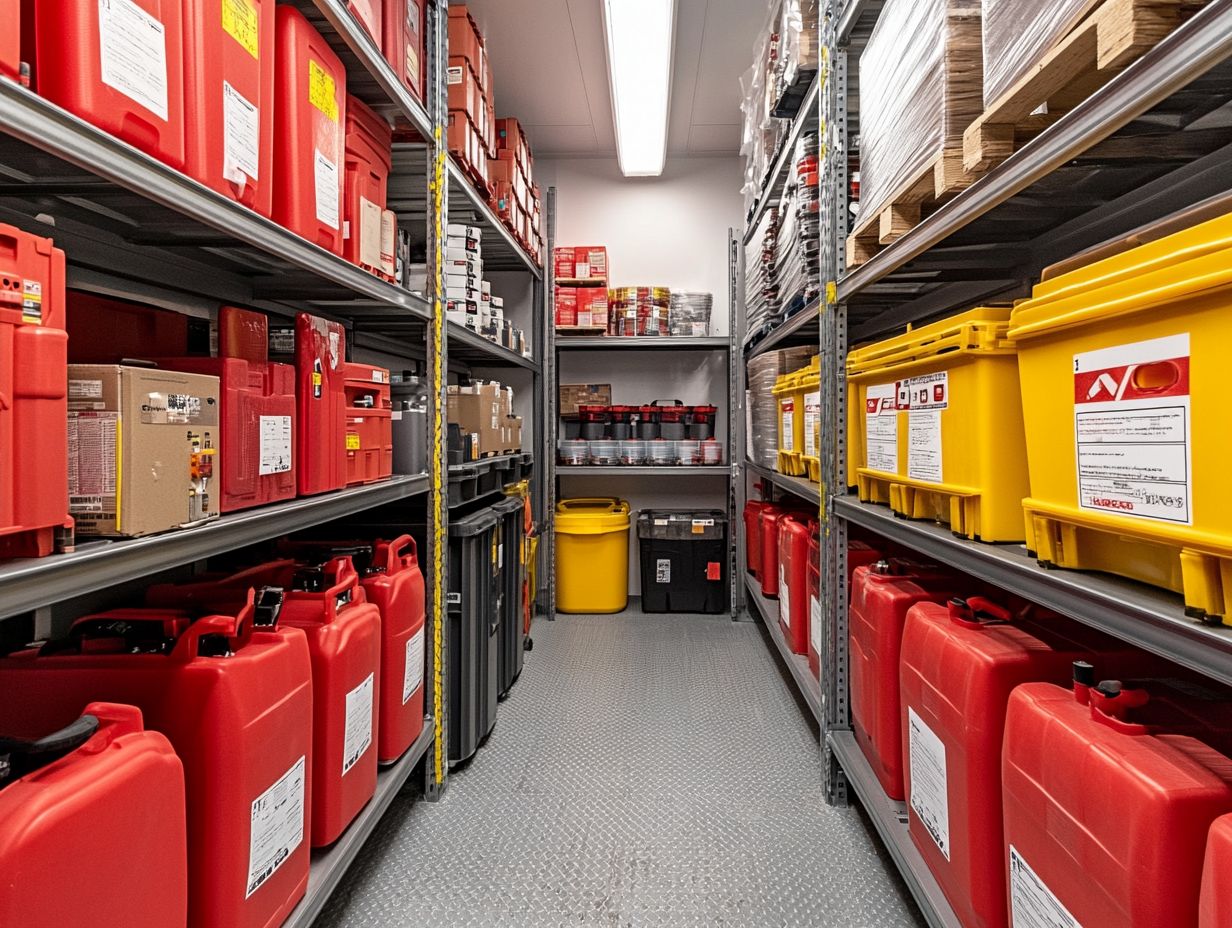
Ensuring compliance and safety in metal storage facilities requires adherence to the regulations established by authorities having jurisdiction (AHJ) and the industry standards set by organizations like the NFPA. This diligence is essential for mitigating the risks associated with fire hazards, safeguarding not only your assets but also the well-being of everyone involved.
Regulations and Standards for Fire Safety
Regulations and standards for fire safety are essential for your metal storage facility. They provide the guidelines established by the NFPA and other regulatory bodies, ensuring that your facility meets the necessary safety requirements to reduce fire risks.
These guidelines cover a wide range of important aspects. They include the design and construction of your storage units and the proper labeling of hazardous materials.
The implementation of effective fire suppression systems is also crucial. The NFPA codes specifically address the storage of flammable and combustible materials, outlining clear separation distances and fire department access routes.
Regular inspections by insurance companies are vital for maintaining compliance. They assess your adherence to these codes, ensuring that any potential hazards are identified and reduced. This collaborative approach safeguards not only your facility but also protects your employees and the nearby community from potential disasters.
Regular Inspections and Maintenance
Conducting regular inspections and maintenance of fire safety equipment, including dust collection systems and emergency gear, is essential for compliance and ensuring safety in metal storage facilities.
Routine evaluations are crucial for identifying potential issues before they escalate into serious hazards. Neglecting this vital practice can lead to unaddressed wear and tear, compromising equipment functionality and increasing the risk of fire incidents.
By keeping safety gear in optimal condition, you empower your workers to respond more effectively during emergencies, minimizing risks and protecting lives.
Regular checks ensure compliance and show your commitment to safety! They also cultivate a culture of safety within the workplace, enhancing overall fire safety and instilling confidence among employees.
Frequently Asked Questions
How can I prevent fire hazards in metal storage?
To avoid fire hazards in metal storage, follow these safety measures:
- Regularly inspect metal storage areas for potential fire hazards, such as damaged electrical wiring or flammable materials stored too close to heat sources.
- Properly label and store all flammable materials in designated areas to prevent accidental ignition.
- Ensure that all electrical equipment used in metal storage areas is up to code and maintained regularly.
- Train all employees on fire safety procedures, including the proper handling and storage of hazardous materials.
- Install fire extinguishers in easily accessible locations and have them regularly inspected and maintained.
- Regularly clean and remove any dust or debris from equipment and storage areas that could potentially ignite.
Can the type of metal used in storage affect fire hazards?
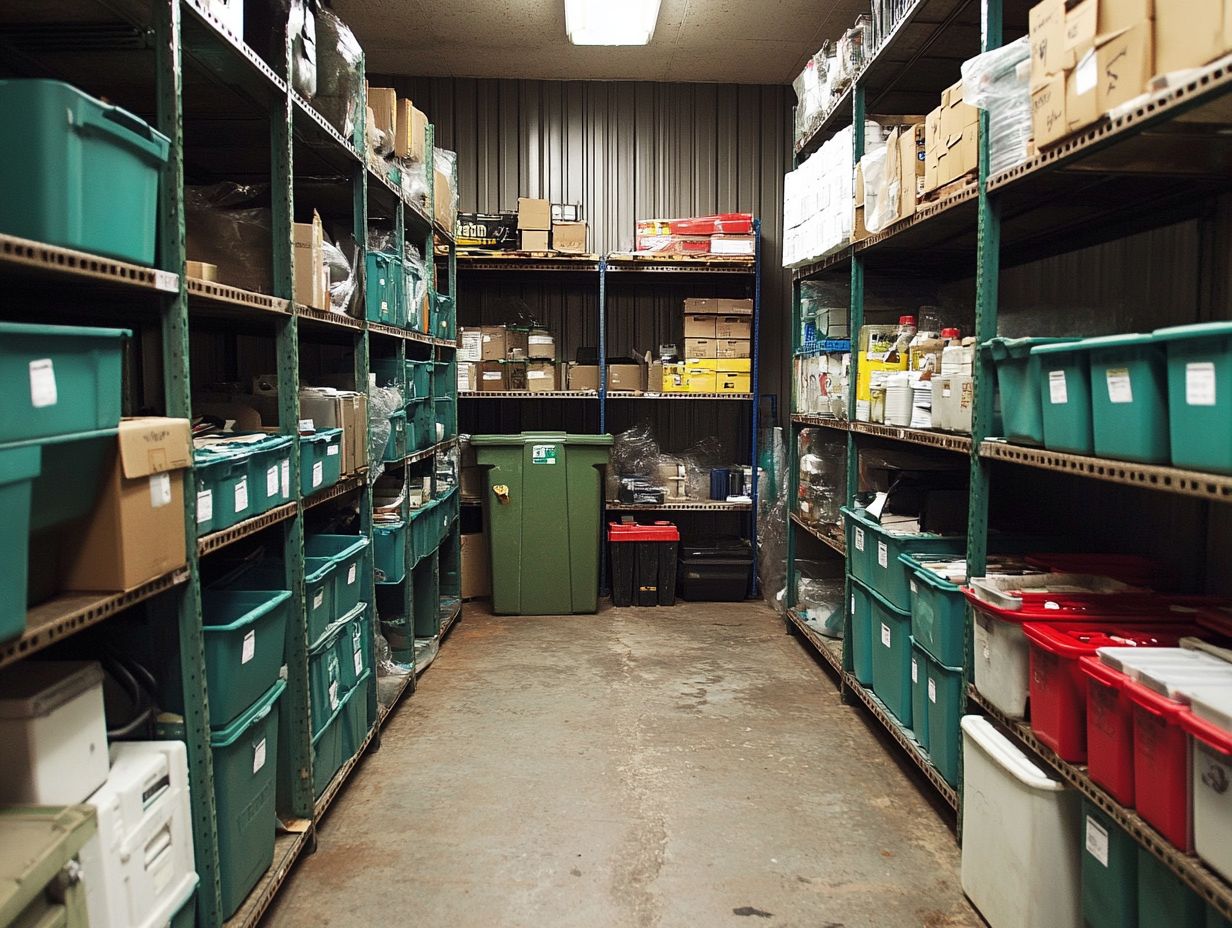
Yes, certain types of metal can increase the risk of fire hazards. For example, oily rags or materials stored in steel drums can ignite more easily compared to other materials. It is essential to properly store and handle these materials to prevent fire hazards.
How can I properly store flammable liquids in metal containers?
When storing flammable liquids in metal containers, follow these guidelines:
- Only use approved metal containers for storing flammable liquids.
- Ensure the containers are tightly sealed and stored away from heat sources.
- Label all containers with the appropriate warning labels.
- Avoid storing excessive amounts of flammable liquids in one location.
- Regularly inspect the containers for any signs of damage or leaks.
What should I do in case of a fire in a metal storage area?
If there is a fire in a metal storage area, follow these steps:
- Every second counts evacuate the area immediately and call 911.
- If safe, attempt to use a fire extinguisher to put out the fire.
- Do not attempt to put out a large fire on your own.
- Follow the designated emergency evacuation plan.
- Do not re-enter the area until it has been deemed safe by fire officials.
Implement these safety measures today for your protection!
Can proper ventilation help prevent fire hazards in metal storage?
Yes, good ventilation is crucial for preventing fire hazards in metal storage. Air circulation helps prevent the buildup of gases that can easily catch fire, reducing the risk of ignition.
Ensure all storage areas have good ventilation systems and maintain them regularly. Without proper ventilation, you risk a dangerous fire situation!
Are there any specific fire safety regulations for metal storage?
Yes, specific fire safety regulations for metal storage must be followed. These include labeling hazardous materials and regular equipment inspections.
Get to know these regulations and stay updated on any changes. Staying informed can save lives and property!











